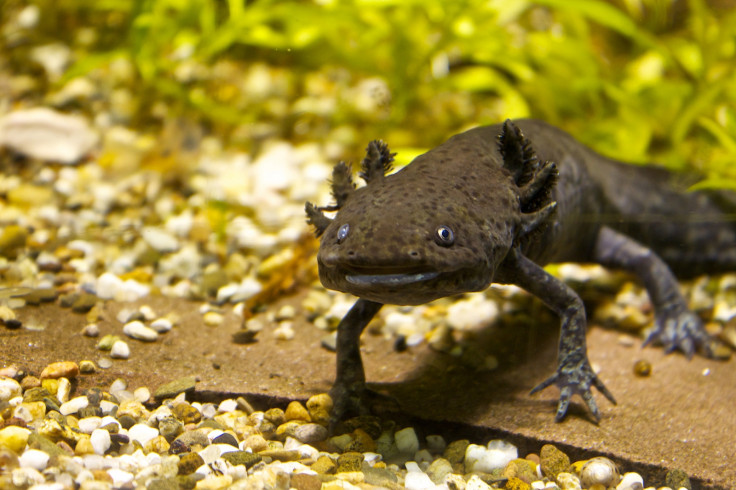Weird world: The cute little 'Peter Pan' monster axolotl that never grows up

The axolotl, or Mexican salamander, is a very strange creature living up to 15 years yet never maturing to an adult. The species is found exclusively in the lake complex of Xochimilco near Mexico City and its name is thought to have originated from the Aztecs as early as the 14<sup>th century. The name derives from atl, meaning water, and xolotl, meaning monster.
Axolotl belongs to the family of Ambystomatidae – or mole salamandars – which diverged from other salamander families over 140 million years ago and are highly distinctive for several reasons.
Possibly the most unusual feature of the species is its "neotenous" nature. It never develops into an adult and retains its juvenile characteristics throughout life. This is because they lack a thyroid stimulating hormone that transforms salamanders into adults – they can be induced to metamorphose in a laboratory with hormones, though.
Adult axolotls resemble the plateau tiger salamander, but with a number of physical differences like longer toes. Normal axolotls, however, retain their juvenile features – in all respects, they look like a large larva.

Fully grown – which takes up to two years – they measure between 15cm and 45cm in length. They have fern-like gill structures and tiny teeth that they sue to grip food. They range in colour, from albino or white, grey, tan, brown to black. Feature-wise, they have external gills, fins, non-protruding eyes and no eyelids.
To breed, the male releases sperm packets that are then taken up by the female for internal fertilisation. The fertilised eggs are attached to structures like plants and after two to three weeks, they hatch. Younger axolotls feed on algae but as they get older, they mainly eat aquatic insects. They have few natural predators but are eaten by birds such as herons.

Another curious feature of the axolotl is its impressive ability to regenerate, allowing them to regrow multiple structures including limbs, organs, its tail, spinal cord and skin – without evidence of scarring. They can also receive transplanted organs from other individuals and accept them without any rejection.
For this reason, they are held in captivity across the world for medical research. "You can cut the spinal cord, crush it, remove a segment, and it will regenerate," Stephane Roy, from the University of Montreal, told Scientific American.
"You can cut the limbs at any level – the wrist, the elbow, the upper arm – and it will regenerate, and it's perfect. There is nothing missing, there's no scarring on the skin at the site of amputation, every tissue is replaced. They can regenerate the same limb 50, 60, 100 times. And every time: perfect."
Their embryos are also extremely robust and can be combined with different axolotl embryos with a high survival rate. Axolotls have been considered critically endangered since 2006 as a result of its severely fragmented distribution and the continuing decline of mature individuals. While the surviving wild population is difficult to assess, the IUCN Red List says it is "very small".
The species is considered a delicacy in Mexico and is eaten roasted. A recent survey found axolotls are still found in local markets, suggesting fishermen know where to find them and are continuing to catch them.
Another threat facing the species is the pollution of the canal system and lakes in Xochimilco from urbanisation. Larger fish, including tilapia and carp, were also introduced to their habitat, meaning competition for food resources has risen for axolotl.
There were fears it had gone extinct in the wild in 2014 but was spotted just a month later. Biologist Armando Tovar Garza, of Mexico's National Autonomous University, said at the time: "We haven't had any captures, but we have had two sightings. That's important, because it tells us we still have a chance."
© Copyright IBTimes 2024. All rights reserved.







